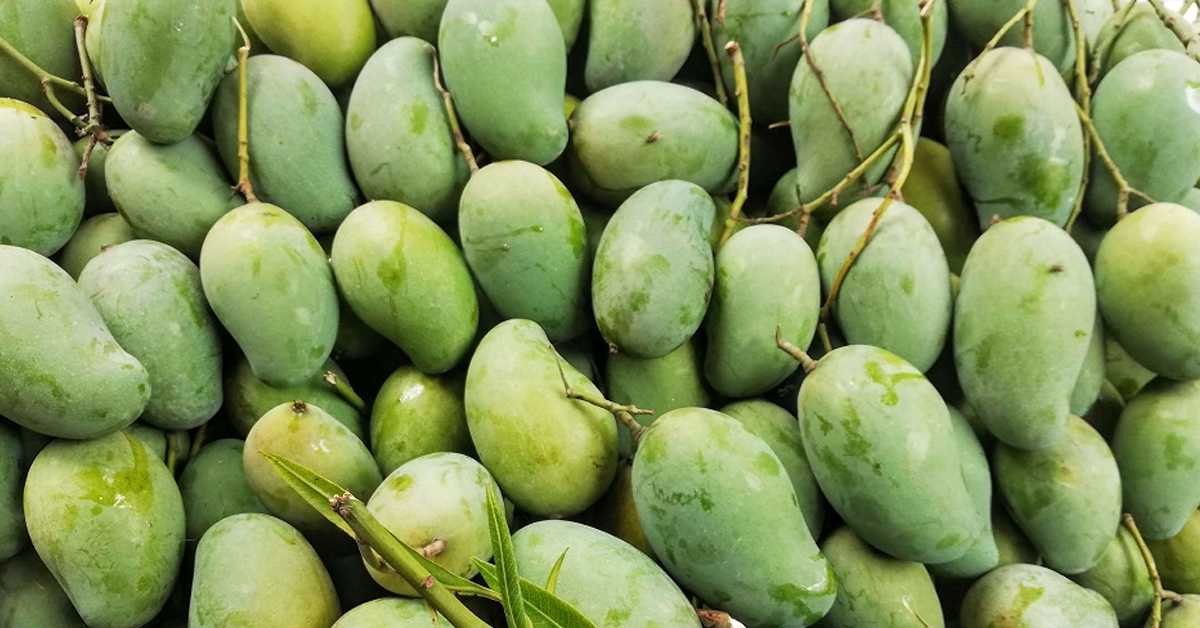- Your cart is empty
- Continue shopping

Among the many gems in South Asia’s mango treasure trove, the Amrapali mango stands out as a modern marvel—an exquisite blend of flavor, texture, and scientific cultivation. A product of innovation and agricultural excellence, Amrapali has steadily earned its place in the hearts of mango enthusiasts, not only in Bangladesh but across the Indian subcontinent.
What is Amrapali Mango?
Amrapali is a hybrid mango variety developed in 1971 by the Indian Agricultural Research Institute (IARI), through the crossbreeding of two legendary mangoes—Dasheri and Neelum. This calculated fusion brought together the rich sweetness and aroma of Dasheri with the compact growth and regular bearing habits of Neelum.
Available primarily from late June through early August, Amrapali is celebrated for its manageable size, deep red to orange flesh, and syrupy sweetness. Its cultivation has spread to Bangladesh, where it thrives in regions like Rajshahi and Chapainawabganj, contributing to the country’s mango legacy.
Key Features of Amrapali Mango
Amrapali mangoes may not be as massive as Fazli, but they compensate with intensity of flavor and visual appeal. They are medium-sized, typically weighing around 250–300 grams.
The mango ripens into a greenish-yellow hue, often with a reddish tinge on the skin. The flesh is richly orange to red, smooth and juicy, with minimal fiber. Its sweetness is profound—among the highest Brix values (sugar content) found in mangoes.
Notably, Amrapali mangoes grow on dwarf trees, making them ideal for high-density farming and backyard cultivation. They are known for their regular fruit-bearing and compact tree structure.
Origin and History
The creation of Amrapali marks a significant milestone in mango history. It was developed as part of a scientific effort to combine the best traits of two iconic Indian varieties. The result was a mango that matured quickly, bore fruit regularly, and had an exceptional flavor profile.
The name “Amrapali” is drawn from ancient Indian history, named after the legendary courtesan and devotee of Lord Buddha, symbolizing grace, beauty, and cultural richness.
In Bangladesh, Amrapali was introduced in the early 2000s and gained traction among orchard owners looking for high-yield, high-demand varieties with export potential.
Why Amrapali is Special
What makes Amrapali truly special is its intense sweetness and deep color. While it may not boast the massive size of Fazli or the historical legacy of Himsagor, its bold flavor and modern efficiency make it ideal for today’s markets.
Its low fiber and high sugar content make it a top pick for fresh consumption, smoothies, desserts, and even mango-based sweets. The fruit also matures quickly and is well-suited for controlled ripening and commercial processing.
Moreover, its compact plant structure allows farmers to grow more trees per acre, increasing yield and profitability.
Cultivation and Commercial Potential
Amrapali’s compact growth and disease resistance have made it a favorite among progressive farmers. Its adaptability to various soil types and resistance to common mango diseases make it a sustainable option for both commercial growers and small-scale cultivators.
Bangladesh has seen increasing interest in Amrapali for export due to its attractive pulp color, excellent sweetness, and reliable shelf life. It travels well and can be transported over long distances with minimal damage, making it suitable for global mango markets.
How to Enjoy Amrapali
Amrapali is best enjoyed fresh, sliced and chilled to experience its rich sweetness and velvety texture. It’s also perfect for making mango smoothies, sorbets, and mousses.
Given its low fiber and vivid color, it’s often used in desserts, mango kulfi, or even in purées for bakery items. Some even experiment with dried mango slices or mango bars made from Amrapali pulp.
Tips for Buying Authentic Amrapali Mangoes
When buying Amrapali, look for medium-sized mangoes with slightly reddish or orange hues on the skin. They should be soft to the touch but not mushy, and should emit a sweet, fruity aroma.
Avoid overripe ones with dark spots or wrinkled skin. The ideal Amrapali mango is rich in color, plump, and mildly soft when pressed.
For the best experience, seek mangoes sourced from reputed orchards in Rajshahi or Dinajpur regions, where Amrapali is grown with care and traditional farming methods.
Final Thoughts
The Amrapali Mango is a shining example of how tradition and innovation can blend to create something truly delightful. With its luscious sweetness, vibrant color, and modern cultivation benefits, Amrapali is not just a mango—it’s a symbol of agricultural evolution.
Whether you savor it as a dessert, blend it into a smoothie, or simply enjoy it fresh under the summer sun, Amrapali delivers an unforgettable mango experience. It is, without a doubt, one of the sweetest success stories in Bangladesh’s evolving mango industry.


Contrary to popular belief, Lorem Ipsum is not simply random text. It has roots in a piece of classical Latin literature from 45 BC, making it over 2000 years old.